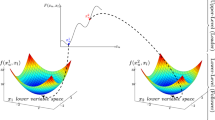Abstract
The process of coming up with an effective constraint programming (CP) model for complex industrial optimization problems constitutes a cumbersome engineering task. Not only the problem representation itself, but also hyper-parameters steering the search and constraint propagation can have a significant impact on the solving performance. In this paper, we illustrate the evolution of a CP implementation (i.e. model and parameters), from the first functioning version with default hyper-parameters, to a more effective implementation through equivalence-preserving model changes and parameter tunings. In particular, we use four different problem representations in combination with three different levels of constraint propagation and a grid of parameter configurations for the employed search strategy. In this case study, we focus on the Oven Scheduling Problem, a formulation of a job scheduling problem variant that often occurs in production industry (e.g. the semiconductor domain). Concerning CP solvers, we use IBM CP Optimizer, currently one of the strongest suits for scheduling problems. By iteratively evolving a given CP implementation that was not able to solve all benchmark instances within the given limit of one hour, we increased the performance to the point where all instances could be solved, and solution quality is at par with the best known solutions in literature.
Access this chapter
Tax calculation will be finalised at checkout
Purchases are for personal use only
Similar content being viewed by others
Notes
- 1.
All the models, instance data and extensive results files are provided at https://tinyurl.com/3n88wj9u.
References
Da Col, G., Teppan, E.: Google vs IBM: a constraint solving challenge on the job-shop scheduling problem (2019). arXiv:1909.08247
Da Col, G., Teppan, E.C.: Learning constraint satisfaction heuristics for configuration problems. In: 19th International Configuration Workshop, vol. 8 (2017)
Da Col, G., Teppan, E.C.: Industrial size job shop scheduling tackled by present day cp solvers. In: International Conference on Principles and Practice of Constraint Programming, pp. 144–160. Springer (2019)
Da Col, G., Teppan, E.C.: Industrial-size job shop scheduling with constraint programming. Oper. Res. Perspect. 9, 100249 (2022)
Kovács, B., Tassel, P., Kohlenbrein, W., Schrott-Kostwein, P., Gebser, M.: Utilizing constraint optimization for industrial machine workload balancing. In: 27th International Conference on Principles and Practice of Constraint Programming (CP 2021). Schloss Dagstuhl-Leibniz-Zentrum für Informatik (2021)
Laborie, P., Godard, D.: Self-adapting large neighborhood search: Application to single-mode scheduling problems. In: Proceedings MISTA-07, Paris 8 (2007)
Laborie, P., Rogerie, J., Shaw, P., Vilím, P.: IBM ILOG CP optimizer for scheduling. Constraints 23(2), 210–250 (2018)
Lackner, M.L., Mrkvicka, C., Musliu, N., Walkiewicz, D., Winter, F.: Minimizing cumulative batch processing time for an industrial oven scheduling problem. In: 27th International Conference on Principles and Practice of Constraint Programming (CP 2021). Schloss Dagstuhl-Leibniz-Zentrum für Informatik (2021)
Lackner, M.L., Mrkvicka, C., Musliu, N., Walkiewicz, D., Winter, F.: Exact methods and lower bounds for the oven scheduling problem (2022). arXiv:2203.12517
Nethercote, N., Stuckey, P.J., Becket, R., Brand, S., Duck, G.J., Tack, G.: Minizinc: Towards a standard cp modelling language. In: International Conference on Principles and Practice of Constraint Programming, pp. 529–543. Springer (2007)
Perron, L., Furnon, V.: Or-tools (2022). https://developers.google.com/optimization/
Rodler, P., Teppan, E., Jannach, D.: Randomized problem-relaxation solving for over-constrained schedules. In: Proceedings of the International Conference on Principles of Knowledge Representation and Reasoning, vol. 18, pp. 696–701 (2021)
Rossi, F., Van Beek, P., Walsh, T.: Handbook of Constraint Programming. Elsevier (2006)
Tarzariol, A., Schekotihin, K., Gebser, M., Law, M.: Efficient lifting of symmetry breaking constraints for complex combinatorial problems. Theory Pract. Logic Program. 22(4), 606–622 (2022)
Teppan, E., Da Col, G.: Automatic generation of dispatching rules for large job shops by means of genetic algorithms. In: CIMA ICTAI, pp. 43–57 (2018)
Teppan, E.C.: Types of flexible job shop scheduling: a constraint programming experiment. In: 14th International Conferences on Agents and Artificial Intelligence (ICAART 2022), vol. 3, pp. 516–523 (2022)
Acknowledgments
This work was supported by the EFRE, REACT-EU, and Carinthian Economic Promotion Fund (Project ML &Swarms, Contract No. KWF-31417—34815—50878)
Author information
Authors and Affiliations
Corresponding author
Editor information
Editors and Affiliations
Rights and permissions
Copyright information
© 2024 The Author(s), under exclusive license to Springer Nature Switzerland AG
About this paper
Cite this paper
Da Col, G., Teppan, E. (2024). Pursuing the Optimal CP Model: A Batch Scheduling Case Study. In: Arai, K. (eds) Intelligent Systems and Applications. IntelliSys 2023. Lecture Notes in Networks and Systems, vol 822. Springer, Cham. https://doi.org/10.1007/978-3-031-47721-8_34
Download citation
DOI: https://doi.org/10.1007/978-3-031-47721-8_34
Published:
Publisher Name: Springer, Cham
Print ISBN: 978-3-031-47720-1
Online ISBN: 978-3-031-47721-8
eBook Packages: Intelligent Technologies and RoboticsIntelligent Technologies and Robotics (R0)




